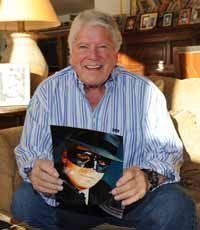A hot dog (less commonly spelled hotdog) is a food consisting of a grilled or steamed sausage served in the slit of a partially sliced bun. The term hot dog can also refer to the sausage itself. The sausage used is a wiener (Vienna sausage) or a frankfurter (Frankfurter Würstchen, also just called frank). The names of these sausages also commonly refer to their assembled dish. Some consider a hot dog to technically be a sandwich. Hot dog preparation and condiments vary worldwide. Typical condiments include mustard, ketchup, mayonnaise, relish, and cheese sauce,and common garnishes include onions, sauerkraut, jalapeños, chili, grated cheese, coleslaw, bacon, and olives. Hot dog variants include the corn dog and pigs in a blanket. The hot dog's cultural traditions include the Nathan's Hot Dog Eating Contest and the Oscar Mayer Wienermobile.
These types of sausages were culturally imported from Germany and became popular in the United States. It became a working-class street food in the U.S., sold at stands and carts. The hot dog became closely associated with baseball and American culture. Although particularly connected with New York City and its cuisine, the hot dog eventually became ubiquitous throughout the US during the 20th century. Its preparation varies regionally in the country, emerging as an important part of other regional cuisines, including Chicago street cuisine.
The word "frankfurter" comes from Frankfurt, Germany, where pork sausages similar to hot dogs originated. These sausages, Frankfurter Würstchen, were known since the 13th century and given to the people on the event of imperial coronations, starting with the coronation of Maximilian II, Holy Roman Emperor, as King. "Wiener" refers to Vienna, Austria (German: Wien), home to a sausage made of a mixture of pork and beef. Johann Georg Lahner, an 18th/19th century butcher from the Franconian city of Coburg, is said to have brought the Frankfurter Würstchen to Vienna, where he added beef to the mixture and simply called it Frankfurter. Nowadays, in German-speaking countries, except Austria, hot dog sausages are called Wiener or Wiener Würstchen (Würstchen means "little sausage"), to differentiate them from the original pork-only mixture from Frankfurt. In Swiss German, it is called Wienerli, while in Austria the terms Frankfurter or Frankfurter Würstel are used.
A German immigrant named Feuchtwanger, from Frankfurt, in Hesse, allegedly pioneered the practice in the American midwest; there are several versions of the story with varying details. According to one account, Feuchtwanger's wife proposed the use of a bun in 1880: Feuchtwanger sold hot dogs on the streets of St. Louis, Missouri, and provided gloves to his customers so that they could handle the sausages without burning their hands. Losing money when customers did not return the gloves, Feuchtwanger's wife suggested serving the sausages in a roll instead. In another version, Antoine Feuchtwanger, or Anton Ludwig Feuchtwanger, served sausages in rolls at the World's Fair – either at the 1904 Louisiana Purchase Exposition in St. Louis, or, earlier, at the 1893 World's Columbian Exposition, in Chicago – again, allegedly because the white gloves provided to customers to protect their hands were being kept as souvenirs.
Another possible origin for serving the sausages in rolls is the pieman Charles Feltman, at Coney Island in New York City. In 1867 he had a cart made with a stove on which to boil sausages, and a compartment to keep buns in which they were served fresh. In 1871 he leased land to build a permanent restaurant, and the business grew, selling far more than just the "Coney Island Red Hots" as they were known.
Carts selling frankfurters in New York City, circa 1906. The price is listed as "3 cents each or 2 for 5 cents".
Ingredients
Common hot dog sausage ingredients include:
- Meat trimmings and fat, e.g. mechanically separated meat, pink slime, meat slurry
- Flavorings, such as salt, garlic, and paprika
- Preservatives (cure) – typically sodium erythorbate and sodium nitrite
Pork and beef are the traditional meats used in hot dogs. Less expensive hot dogs are often made from chicken or turkey, using low-cost mechanically separated poultry. Changes in meat technology and dietary preferences have led manufacturers to lower the salt content and use turkey, chicken, and vegetarian meat substitutes.
Commercial preparation
Hot dogs are prepared commercially by mixing the ingredients (meats, spices, binders and fillers) in vats where rapidly moving blades grind and mix the ingredients in the same operation. This mixture is forced through tubes into casings for cooking. Most hot dogs sold in the US are "skinless" rather than "natural casing" sausages.
Here's a great meat-and-potatoes combination that's sure to be a hit with your gang! There's no need to make a separate mashed potato side dish... you can have an all-in-one dinner with this reader-favorite casserole.
- 1 pound lean ground beef
- 1/3 cup saltine cracker crumbs (about 8 crackers)
- 1 onion, finely chopped
- 1 egg, lightly beaten
- 1 tablespoon chili powder
- 3/4 teaspoon salt
- 4 servings warm instant mashed potatoes
- 1 (11 ounce) can whole kernel corn, drained
- 6 scallions, thinly sliced
- 1/2 cup shredded Cheddar cheese
- Preheat oven to 375º. Coat an 8-inch square baking dish with cooking spray
- In a large bowl, combine ground beef, cracker crumbs, onion, egg, chili powder, and salt; mix well. Press mixture into prepared baking dish and bake 25 to 30 minutes, or until juices run clear. Drain off excess liquid.
- Combine potatoes, corn, and scallions. Spread over meat loaf. Sprinkle cheese evenly over top.
- Bake an additional 8 to 10 minutes, or until cheese has melted and top has begun to brown.
NATIONAL POLAR BEAR DAY HISTORY
Each year, Polar Bears International sponsors National Polar Bear Day. They have been celebrating the day since at least 2011.
Polar Bear FAQ
Q. Are polar bears white?
A. A polar bear’s skin is actually black. Its thick, insulating fur is translucent.
Q. Where do polar bears live?
A. Polar bears cover quite a bit of territory. Their home in the Arctic spans from Russia, across Norway, Greenland, Canada, and some parts of Alaska.
Q. What is a polar bear hybrid?
A. Some polar bears and grizzly bears have bred creating a hybrid bear. They are called various names including grolar and pizzly bears.















